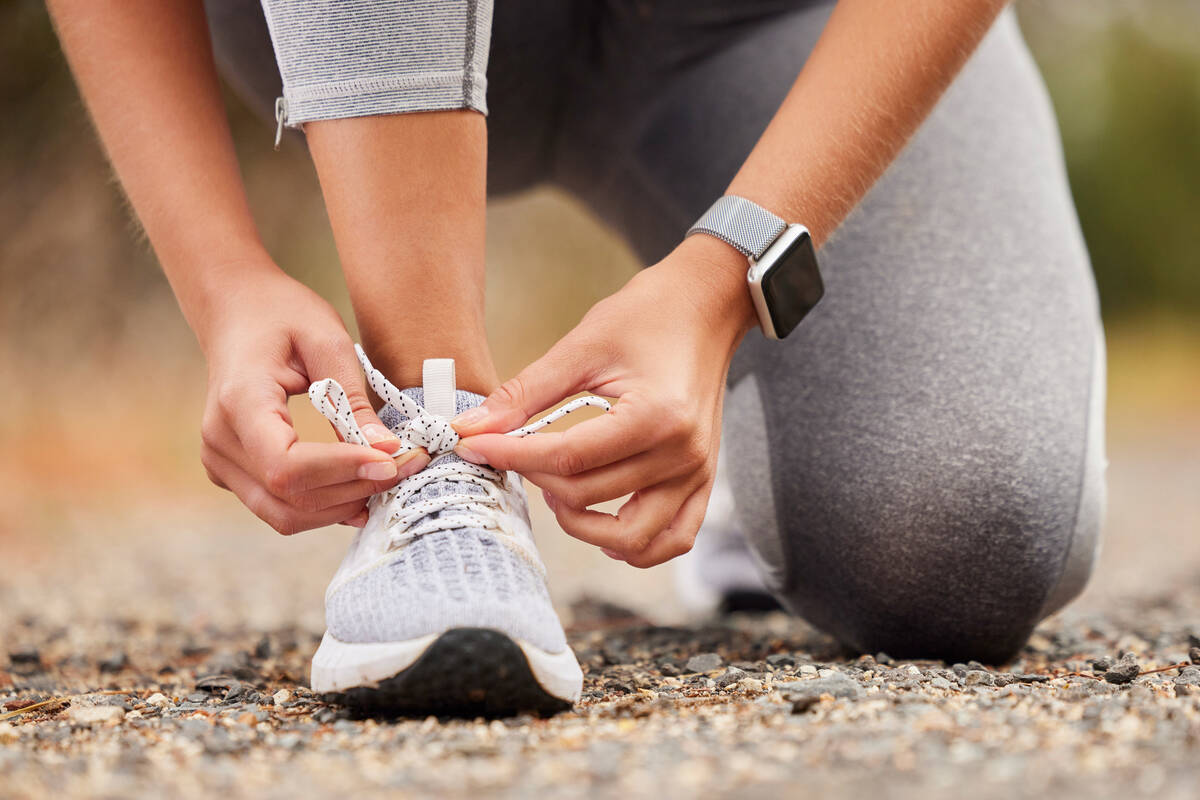Should you add ‘retro walking’ to your workout routine?
Here’s a simple way to switch up your walking routine, according to experts: Try going backward.
Taking a brisk walk is an exercise rich in simplicity, and it can have impressive mental and physical benefits: stronger bones and muscles, cardiovascular fitness and stress relief, to name a few. But like any workout, hoofing it for your health may feel repetitive and even boring after a while.
Backward walking, also known as retro walking or reverse walking, could add variety and value to an exercise routine, when done safely. Turning around not only provides a change of view, but also puts different demands on your body.
Janet Dufek, a biomechanist and faculty member at UNLV, has researched the mechanics of both walking and landing from jumps to identify ways of preventing injuries and improving physical performance. And as a former college basketball player and a regular exerciser, she’s also done her fair share of backward walking.
In humans, reverse locomotion can increase hamstring flexibility, strengthen underused muscles and challenges the mind as the body adjusts to a new movement and posture.
“I see a lot of people in my neighborhood and they walk, and that’s good,” she said. “But they are still stressing the same elements of their structure over and over again. Walking backward introduces an element of cross-training, a subtly different activity.”
On the treadmill
Kevin Patterson, a personal trainer in Nashville, Tennessee, recommends the treadmill as the safest place to retro walk. You can adjust it to a slow speed. However, Patterson likes to turn off the treadmill — termed the “dead mill” — and have clients propel the belt on their own.
“It can take a while to get the treadmill going, but from there we have them be the horsepower for the treadmill,” he said.
Patterson said he uses backward walking with all his clients as an “accessory exercise” — a weight-training term for add-on movements designed to work a specific muscle group — or during warm-ups. The activity typically makes up a small part of the workouts, he said.
“The treadmill is great for older clients because you have the handles on the side and you reduce that risk of falling,” he said.
Off the treadmill
Dufek suggests working a one-minute segment of backward walking into a 10-minute walk and adding time and distance as you get comfortable.
You can also do it with a partner; face each other, perhaps clasp hands. One person walks backward, and the other strolls forward and watches for problems. Then switch positions.
“At first, you start really, really slowly because there’s a balance accommodation and there is brain retraining. You are learning a new skill,” Dufek said. “You’re using muscles in different ways.”
If you work your way up to running and get really good at it, you can try running a marathon backward — 26.2 miles. Yes, people have done that.
A form of cross-training
Dufek classifies backward walking as a form of cross-training, or incorporating a mix of moves into a fitness program. Doing a range of exercises can help prevent overuse injuries, which can occur after repeatedly using the same muscle groups.
For many people, cross-training involves different activities and types of exercise: for example, running one day, swimming the next, and strength training on a third day. But the modifications required to walk backward work in the same way, but on a micro level.
Do small tweaks make much of a difference? Once an avid runner, Dufek said she had several pairs of running shoes and did not wear the same pair two days in a row.
“The shoes had a different level of wear, a different design,” she said. “Just by changing that one element, in this case footwear, it would provide a slightly different stress to the system.”
Retro walking as rehab
Physical therapists instruct some of their clients to reverse walk, which can be useful after knee injuries or for people in rehabilitation or recovering from surgery.
“Backward walking is very different than forward walking from a force perspective, from a movement pattern perspective,” Dufek explained. Instead of landing heel first, “you strike the forefoot first, often quite gently, and often the heel does not contact the ground.”
“This reduces the range of motion in the knee joint, which allows for activity without stressing the (knee) joint,” Dufek said.
Backward walking also stretches the hamstring muscles, the group of muscles at the back of the thigh. Dufek is interested in finding out if it improves balance and reduces fall risks in older adults by activating more senses of the body.
Common in athletics
There is nothing unnatural about backward walking. In fact, backward running is a key skill for top athletes.
Basketball players do it. So do soccer players. Football players — particularly the defensive backs — do it continually.
“I played basketball, and I probably spent 40 percent of my time playing defense and running backward,” Dufek said.




















